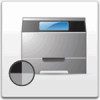Lexmark Monochrome Laser Complete Printer Reference (1.7 MB) - Page 170
Tracking job statistics, Job buffering, Managing memory, Drivers, MarkVision and Utilities
 |
View all Lexmark Monochrome Laser manuals
Add to My Manuals
Save this manual to your list of manuals |
Page 170 highlights
Tracking job statistics If an optional hard disk is installed, you can use the disk to store job statistics about individual printers or network printer activity. You can set up job accounting from the operator panel, or use MarkVision to manage job statistics. This section explains how to change the job accounting settings from the operator panel. Refer to the MarkVision documentation on the Drivers, MarkVision and Utilities CD for more information about using MarkVision to set up job accounting. To collect data about printer activity, set Job Accounting on from the Setup Menu. The printer then gathers information about whether jobs printed with or without errors, the time required to print the jobs, size of jobs in bytes, printer language used, requested paper sizes and types, print quality setting used, and the number of printed pages and copies requested. Use the Job Acct Limit menu item in the Setup Menu to specify the number of print jobs for which statistics are stored. Once you reach the limit you set, statistics for the oldest print jobs are deleted as new statistics are collected. If you select Disabled rather than a number from 10 to 1000, the only limit to the number of jobs for which you can collect statistics is the memory available on the disk. Note: The Job Accounting menu item is not displayed if the installed disk option is defective or read/write protected, or if Job Buffering has been enabled and the Job Buffer Size menu item is set to 100%. When you want to analyze the data you have stored, print the statistics data file by selecting Print from the Job Acct Stat menu item in the Setup Menu. Each record in the file consists of more than 75 data fields, providing information that can help you make decisions such as how to allocate the costs associated with maintaining the printer, and whether printer speed and capacity are meeting demands. Job buffering If an optional hard disk is installed in the printer, you can temporarily store (or spool) print jobs to the disk. This is referred to as job buffering. These jobs may be processed as they arrive, or stored for later processing if the printer is already printing another job. Once you've enabled job buffering for a particular port, storing and processing print jobs is automatic. Managing memory 170















